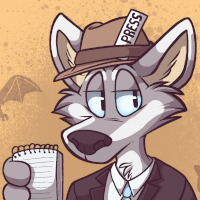Planet of the Apes: Tales From the Forbidden Zone, Edited by Rich Handley and Jim Beard – Book Review by Fred Patten
by Pup Matthias
Submitted by Fred Patten, Furry’s favorite historian and reviewer.
 Planet of the Apes: Tales From the Forbidden Zone, edited by Rich Handley and Jim Beard.
Planet of the Apes: Tales From the Forbidden Zone, edited by Rich Handley and Jim Beard.
London, Titan Books, January 2017, paperback, $14.95 (421 pages), Kindle $9.99.
“The 1968 Planet of the Apes film has inspired generations of authors. Now a who’s who of modern writers produces sixteen all-new tales, exclusive to this volume, set in the world of the original films and television series.” (blurb)
Plus an Introduction by co-editor Rich Handley and an Afterword by co-editor Jim Beard. Handley explains that, while there have been Planet of the Apes movies, TV series, script novelizations, original novels, comic books, and so on, there have not been any Apes short stories before. Hence this book.
Seventeen authors (one story is a collaboration), most of whom are veteran s-f novelists or comic-book writers who have written some form of Apes fiction before, were invited to contribute a story to this anthology. All have had the creative freedom to explore their own ideas, without any editorial attempt to make the stories consistent. Since the first five Apes films established the concept that time travel is “a highway with infinite lanes leading from the past to the future” (p. 12), all stories are equally valid.
“Unfired” by Dan Abnett is set in the nuclear wasteland in Beneath the Planet of the Apes. A group of seven mutated, telepathic humans is making a pilgrimage through the Forbidden Zone to the subterranean city:
“They spent two weeks following the track through the craterland. By night, wild dogs barked in the distance, and Taul kept his rifle close. They skirted the rims of wide craters in the heat. The sun made the air buzz and click. Chemical lakes had formed in the basins of the craters, some vivid turquoise or blood-red. The wind stank of sulfur. Occasionally, they could see shapes down in the lakes: rusted, twisted, blackened masses half submerged, buckled metal leering at the sky, vague in the mists that lay across the toxic pools.” (p. 20)
Four turn back, or die, or are killed by the Third Race (the apes), one by one. The survivors’ goal is the the city under New York; the holy city of God — the doomsday bomb.


 The Star Justice series
The Star Justice series Dubiously Canon, by Rukis
Dubiously Canon, by Rukis Felicia: The Night of the Basquot, by Chas. P. A. Melville. Illustrated by the author.
Felicia: The Night of the Basquot, by Chas. P. A. Melville. Illustrated by the author. Melville later brought Felicia back in a series of text novelette booklets, with illustrations every few pages, published by CaféPress. These continued the lighter stories in ZU. Felicia became a professional sorceress-for-hire/detective who got involved with finding and dispelling ancient evils, or preventing their escape to wreak havoc in Katara and its neighboring animal kingdoms of Dogonia, Bruinsland (bears), Scentas (skunks), Rodentia (mice), and others. Melville wrote five of these, from Felicia and the Dreaded Book of Un (February 2004) to Felicia and the Border Collie Patrol (January 2008). One, Felicia and the Tailcutter’s Curse (June 2004), won that year’s Ursa Major Award in the Best Short Fiction category. All five were republished as a single book,
Melville later brought Felicia back in a series of text novelette booklets, with illustrations every few pages, published by CaféPress. These continued the lighter stories in ZU. Felicia became a professional sorceress-for-hire/detective who got involved with finding and dispelling ancient evils, or preventing their escape to wreak havoc in Katara and its neighboring animal kingdoms of Dogonia, Bruinsland (bears), Scentas (skunks), Rodentia (mice), and others. Melville wrote five of these, from Felicia and the Dreaded Book of Un (February 2004) to Felicia and the Border Collie Patrol (January 2008). One, Felicia and the Tailcutter’s Curse (June 2004), won that year’s Ursa Major Award in the Best Short Fiction category. All five were republished as a single book,  Griffin Ranger. Volume 1, Crossline Plains
Griffin Ranger. Volume 1, Crossline Plains


 Sabrina Online: The Tail of Two Decades, by Eric W. Schwartz. Illustrated.
Sabrina Online: The Tail of Two Decades, by Eric W. Schwartz. Illustrated. Always Gray in Winter, by Mark J. Engels
Always Gray in Winter, by Mark J. Engels